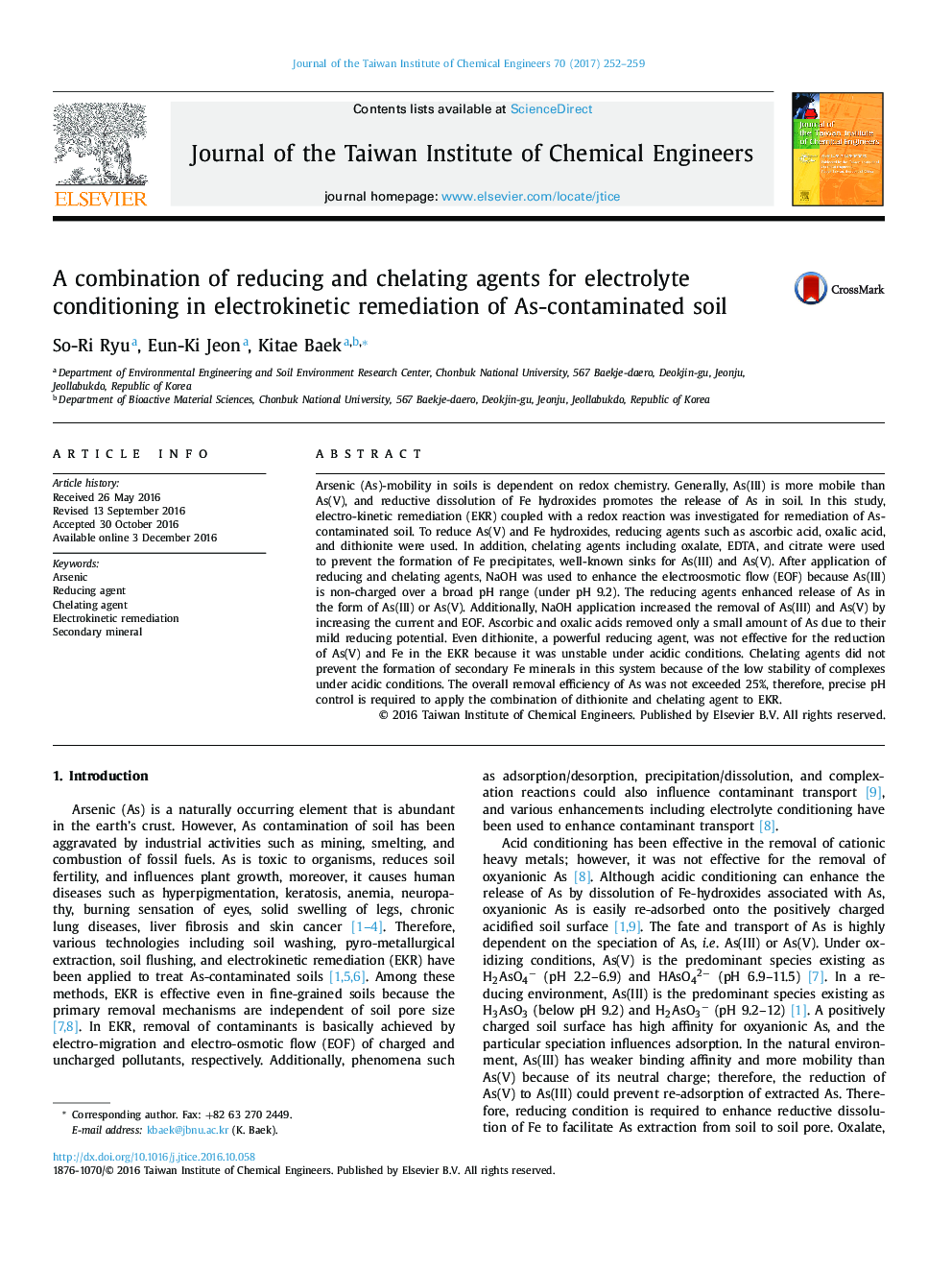| کد مقاله | کد نشریه | سال انتشار | مقاله انگلیسی | نسخه تمام متن |
|---|---|---|---|---|
| 4998906 | 1460404 | 2017 | 8 صفحه PDF | دانلود رایگان |

- Reducing agents could reduce partly ferric(oxy)hydroxide and/or arsenic.
- Arsenic mobility increased by reduction of As.
- Reduction of iron prevented the formation of secondary minerals.
- The mobile arsenic was transported by NaOH-enhanced electro-osmotic flow.
Arsenic (As)-mobility in soils is dependent on redox chemistry. Generally, As(III) is more mobile than As(V), and reductive dissolution of Fe hydroxides promotes the release of As in soil. In this study, electro-kinetic remediation (EKR) coupled with a redox reaction was investigated for remediation of As-contaminated soil. To reduce As(V) and Fe hydroxides, reducing agents such as ascorbic acid, oxalic acid, and dithionite were used. In addition, chelating agents including oxalate, EDTA, and citrate were used to prevent the formation of Fe precipitates, well-known sinks for As(III) and As(V). After application of reducing and chelating agents, NaOH was used to enhance the electroosmotic flow (EOF) because As(III) is non-charged over a broad pH range (under pH 9.2). The reducing agents enhanced release of As in the form of As(III) or As(V). Additionally, NaOH application increased the removal of As(III) and As(V) by increasing the current and EOF. Ascorbic and oxalic acids removed only a small amount of As due to their mild reducing potential. Even dithionite, a powerful reducing agent, was not effective for the reduction of As(V) and Fe in the EKR because it was unstable under acidic conditions. Chelating agents did not prevent the formation of secondary Fe minerals in this system because of the low stability of complexes under acidic conditions. The overall removal efficiency of As was not exceeded 25%, therefore, precise pH control is required to apply the combination of dithionite and chelating agent to EKR.
180
Journal: Journal of the Taiwan Institute of Chemical Engineers - Volume 70, January 2017, Pages 252-259